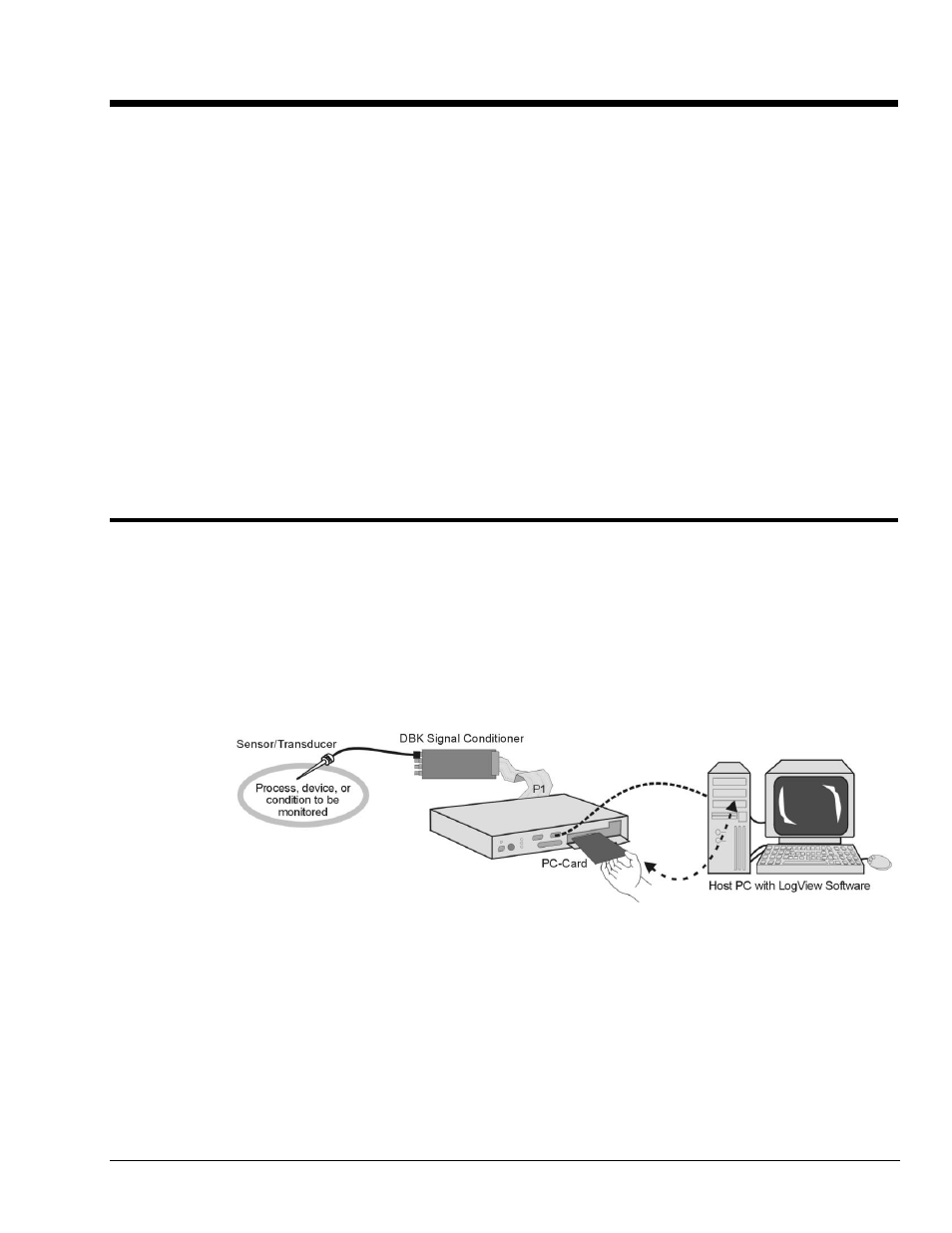1 - an introduction to logbook, An introduction to logbook 1, Logbook basics – Measurement Computing LogBook Series User Manual
Page 11

LogBook User’s Manual
969591
An Introduction to LogBook 1-1
An Introduction to LogBook
1
LogBook Basics……1-1
What are LogBooks? ….. 1-1
Front and Rear Panels……1-2
Highlight of Features …… 1-3
LogBook/300 Block Diagram …… 1-4
LogBook/360 Block Diagram …… 1-5
The Use of PC-Cards with LogBook …. 1-6
System Software……1-8
Operational Features……1-8
Data Acquisition Overview……1-8
LogBook System File
[Must be on the PC-Card!]
……1-9
Communications……1-10
Triggering and Scan Timing……1-11
Scan Rate Limitations……1-11
Use of Outputs to Alarm and Control……1-13
Acquisition……1-13
Data Storage and Retrieval……1-13
Specifications …… 1-15
LogBook Basics
What are LogBooks?
LogBook/300 and LogBook/360 are PC-based data acquisition systems that can work in a stand-alone
mode (no PC present), or linked to a PC. They combine onboard intelligence with a removable PC-Card
that stores the configuration file and the collected data. LogBooks have many options, most of which are
detailed in the LBK chapter, and in the DBK Option Cards and Modules document. Note that the PC link
can be by serial or parallel port.
LogBook/300, Simple System Setup
The PC-Card holds the configuration file [created by LogView]. The file tells LogBook how to perform a
particular acquisition. The PC-Card also holds the acquired data files. The PC can upload to or download
from the PC-Card by cable if the PC is attached to LogBook, or by physical transport of the PC-Card from
one unit to the other. Multiple configuration files and multiple PC-Cards allow the system to handle
complex data acquisition environments with a large number of data-files.
